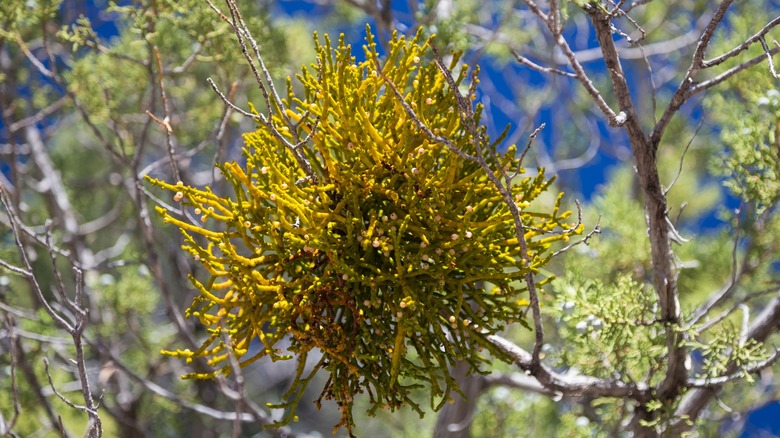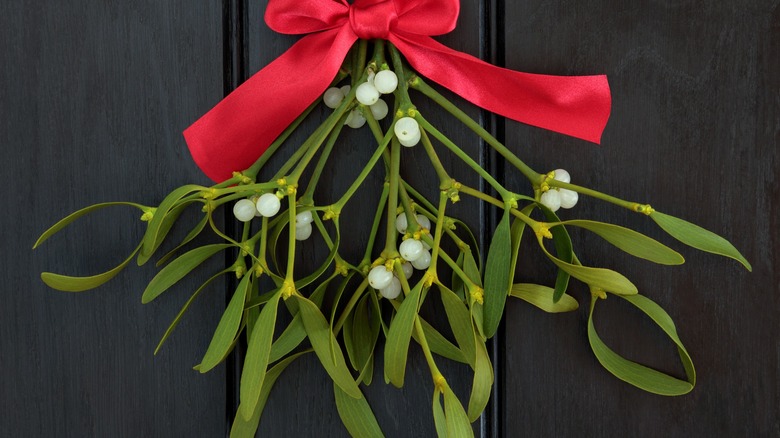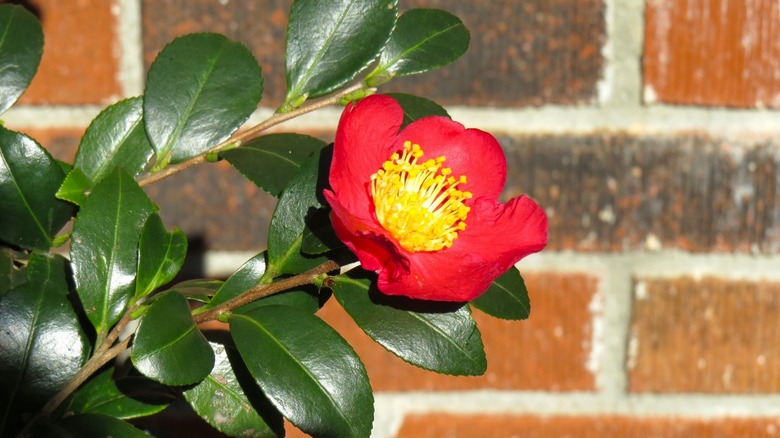The Dangers Of Having Mistletoe In Your Garden
Mistletoe is an interesting plant known for its decorative appeal around the holidays, but did you know it is a parasitic species? It uses certain trees as its host and gets its nutrients from them. Although it doesn't typically kill the host tree, it can definitely stunt its growth. In fact, there are some significant drawbacks to having mistletoe growing in your yard, especially if you have curious pets or children.
A lot of the precautions to take depend on the type of mistletoe you have, but in the United States, it's most common to see American mistletoe, which is less dangerous than some of the more than 1,000 species found in the rest of the world. Some of the trees that are popular hosts are ash, poplar, maple, oak, elm, pecan, walnut, hickory, and aspen. American mistletoe has white flowers and berries that are not edible, and the entire plant is considered toxic to humans and pets.
The dangers of mistletoe
Most of the danger of mistletoe poisoning comes from the European variety. European mistletoe has yellow-green flowers and white berries and is used for holiday décor in the same way as American varieties. But according to WebMD, ingesting a small amount of American mistletoe generally produces no symptoms, and if poisoning does occur, it's not lethal. It will cause you to be nauseous and possibly cause vomiting, but nothing more extreme. However, European mistletoe is dangerous in high doses and can even cause death.
Additionally, the phoratoxins and lectins contained within the plant can affect the hearts of your pets if they eat a significant amount. Luckily, most animals probably won't eat too much of it, but it's still a good idea to keep it out of their reach. The symptoms for dogs and cats are vomiting, diarrhea, low blood pressure and/or heart rate, difficulty breathing, weakness, and unusual behavior. Horses may get colic. Cases of this are rare, but besides the danger mistletoe poses to humans and pets, it can put a bad strain on the trees it uses as hosts. Branches that it attaches to may die — if you see mistletoe invading your backyard, pruning the infected branches away is your best course of action.
Festive plants without the drawbacks
Growing mistletoe is difficult anyhow since you can't just go out and buy seeds, and it doesn't grow in soil. But don't despair! We've got some alternatives for you if you're looking for holiday plants you can grow. For example, poinsettias are a great choice you can try, although you still will want to keep the fur babies from eating them. The symptoms, if they do, however, are mild and include drooling, vomiting, and diarrhea.
Another idea is a plant called Yuletide camellia, whose name says it all. This lovely festive flower is actually edible and is perfectly safe for pets and children alike. It is actually a shrub that sports ravishing red blooms during the holiday season and can be grown either outdoors or indoors. Once they're established, their care is minimal, and they are hardy in USDA zone 7. Evergreen and beautiful for the holidays, this is a great substitute for mistletoe.


